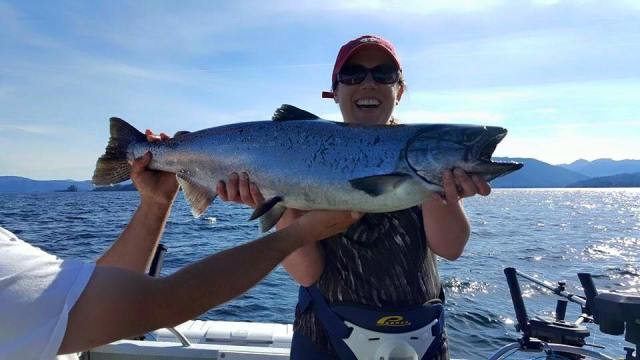When you think fishing in Alaska, what comes to mind? Most people would probably think world class salmon fishing with people standing elbow to elbow in hopes of hooking an unsuspecting sockeye salmon or perhaps dropping a line several hundred feet to the ocean bottom for a chance at hooking up with a barn door sized halibut. Regardless of what image you conjure up in your mind when you think of Alaskan fishing, one thing is for sure, Alaska is known for its fishing.
However, there is much more fishing to be had than the popular salmon and halibut fishing that we all know and love. Nothing is more Alaskan than fishing a small stream or lake for Rainbow Trout, Brook Trout, Dolly Varden or Grayling out in the middle of the wilderness; just you against mother nature. Luckily, Alaska is full of places just like that and Ketchikan is possibly one of the most remote and beautiful places you can find within the last frontier. Fishing the back country of Ketchikan is not for the faint of heart. You must contend with wildlife, rough terrain and moody weather, but the reward is well worth it.

Accessing the backcountry of Ketchikan to find trophy fish can be as strenuous as you want to make it. For a more mild adventure, try driving the Tongass Highway which extends from Settlers Cove State Recreation site to Beaver Falls; roughly 30 miles. There are several places to pull off and fish like the popular Ward Creek and Whitman Creek. From salmon to trout to Dolly Varden and even halibut, right from the comfort of your own two feet; without having to grow a pair of sea legs. For an even more adventurous trip, try hiring a pilot to fly you to an even more remote location for world class Ketchikan fishing!
Getting to these watering holes is only the beginning. Once there, and along the trail, wildlife is an always present factor. From moose, bear, wolves, coyotes and more, you will always want to keep your senses sharp. Moose with calves can be especially dangerous if you find yourself in between a calf and its mother. Bear always poses a threat when navigating the back country. Your best line of defense is offense. What I mean by that is to be proactive by making noise to alert the bear of your presence. The biggest mistake we as humans make when it comes to bear encounters is startling an unsuspecting bear. The Ketchikan area (Tongass National Forest) is also home to the rare Kermode bear, or spirit bear. These white colored bears are a subspecies of the numerous black bears that roam the area and are not albinos. The white or cream colored fur is caused by a double recessive gene unique to the subspecies.
With Ketchikan being located within Tongass National Forest, you are almost certain to get wet. The Tongass National Forest is the largest national forest in the United States and the Earth’s largest remaining temperate rainforest covering 17 million acres! Packing rain pants and jacket are critical when traversing the back country of Ketchikan in search of that once in a lifetime experience.
Regardless of what your Alaskan fishing adventure might entail, being prepared for the ruggedness of Alaska will ensure that your trip goes smoothly and as enjoyable as possible.
